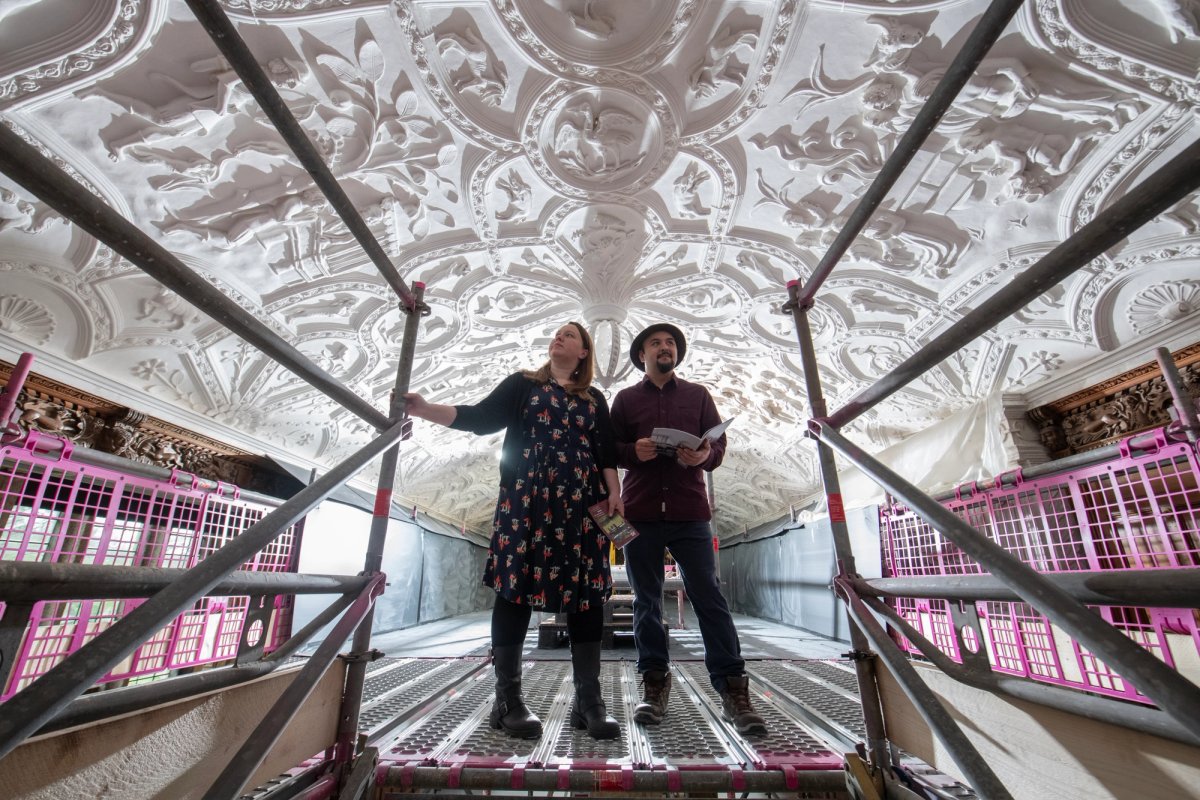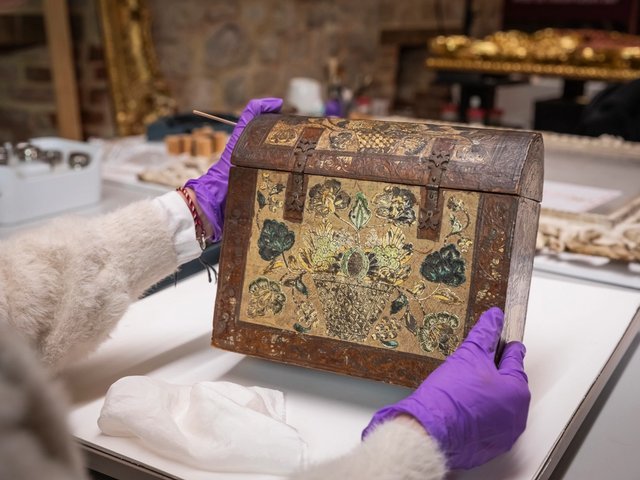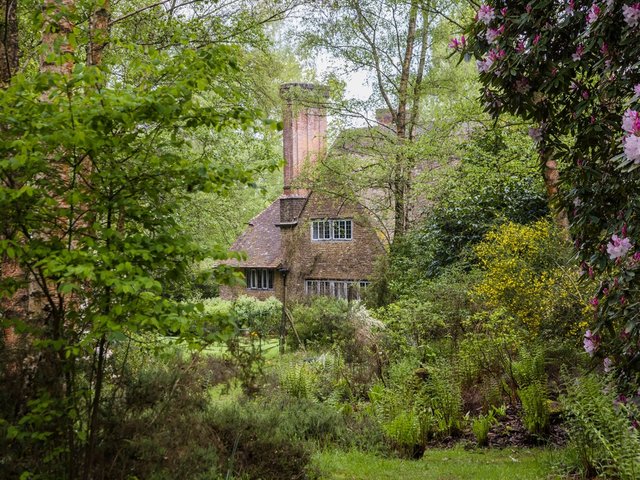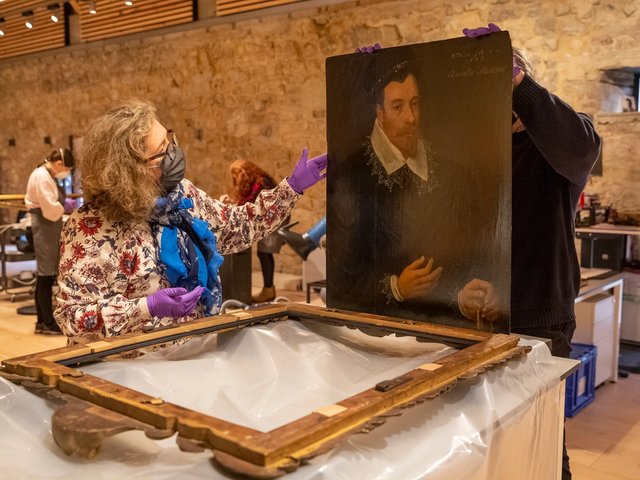Anyone who wants to come face-to-face with a manticore still has a few months to climb the scaffolding steps at a mansion in Cornwall, and study one of the most spectacular ceilings in Britain, or indeed Europe.
The 17th-century Long Gallery of Lanhydrock really is long, and at 35 metres its barrel vaulted plaster ceiling, studded with hundreds of figures of birds, beasts, flowers, fruit and humans, is believed the longest of its kind in Europe. To enable the first major conservation work in 400 years, a scaffolding platform now runs the entire length of the gallery to allow the specialists from Cliveden Conservation clean, repair and paint, but it also allows visitors a unique chance to view the scenes in unprecedented detail.
The ceiling includes bible scenes and myriad real and mythical beasts, mostly taken from a medieval bestiary in the library collection. The 17th-century craftsmen, believed to be by the Abbott family from Bideford in Devon, had clearly seen real life models for the delightfully lively foxes and cats, took a surprisingly good guess at elephants and camels, but were into unknown territory with manticores, from Persian mythology and said to have human heads, lions’ bodies and scorpions' tales—the Lanhydrock versions have rather dismal women’s faces. Children with evil minds will probably enjoy the gulons most, savage and voracious creatures from Scandinavian mythology, which ate until forced to wedge themselves between two trees to promote a bit of bowel clearing, vividly depicted in the ceiling.
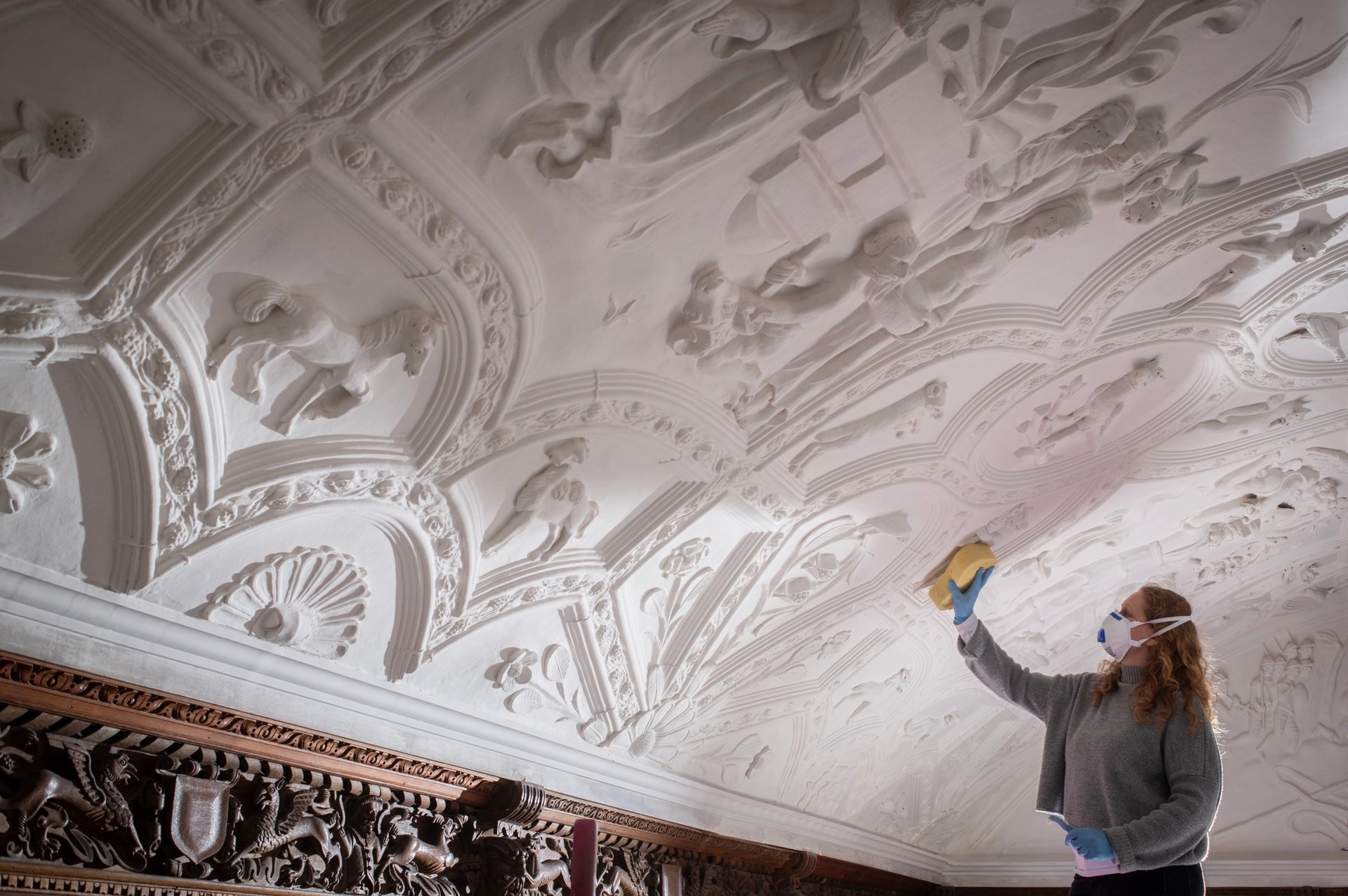
A conservator using a sponge to clean the Long Gallery ceiling at National Trust Lanhydrock, Cornwall © National Trust Images. Steve Haywood
The ceiling is an extraordinary survivor, a 17th-century treasure in a Victorian mansion. The original house was built for John Robartes in 1620-40, a politician and scholar who fought for the Parliamentary side in the Civil War, retired from public life before the execution of Charles I and managed to keep his house and lands under the Restoration of Charles II.
It was still in the family in 1881 when a fire broke out and destroyed interiors including rooms newly restored by Giles Gilbert Scott. Local miners were called in to blow up part of the building as a fire break, which saved the Long Gallery wing and its contents including the most valuable library in the entire National Trust estate. The gutted wings were rebuilt spattered with state-of-the-art Victorian fire fighting equipment, still in place.
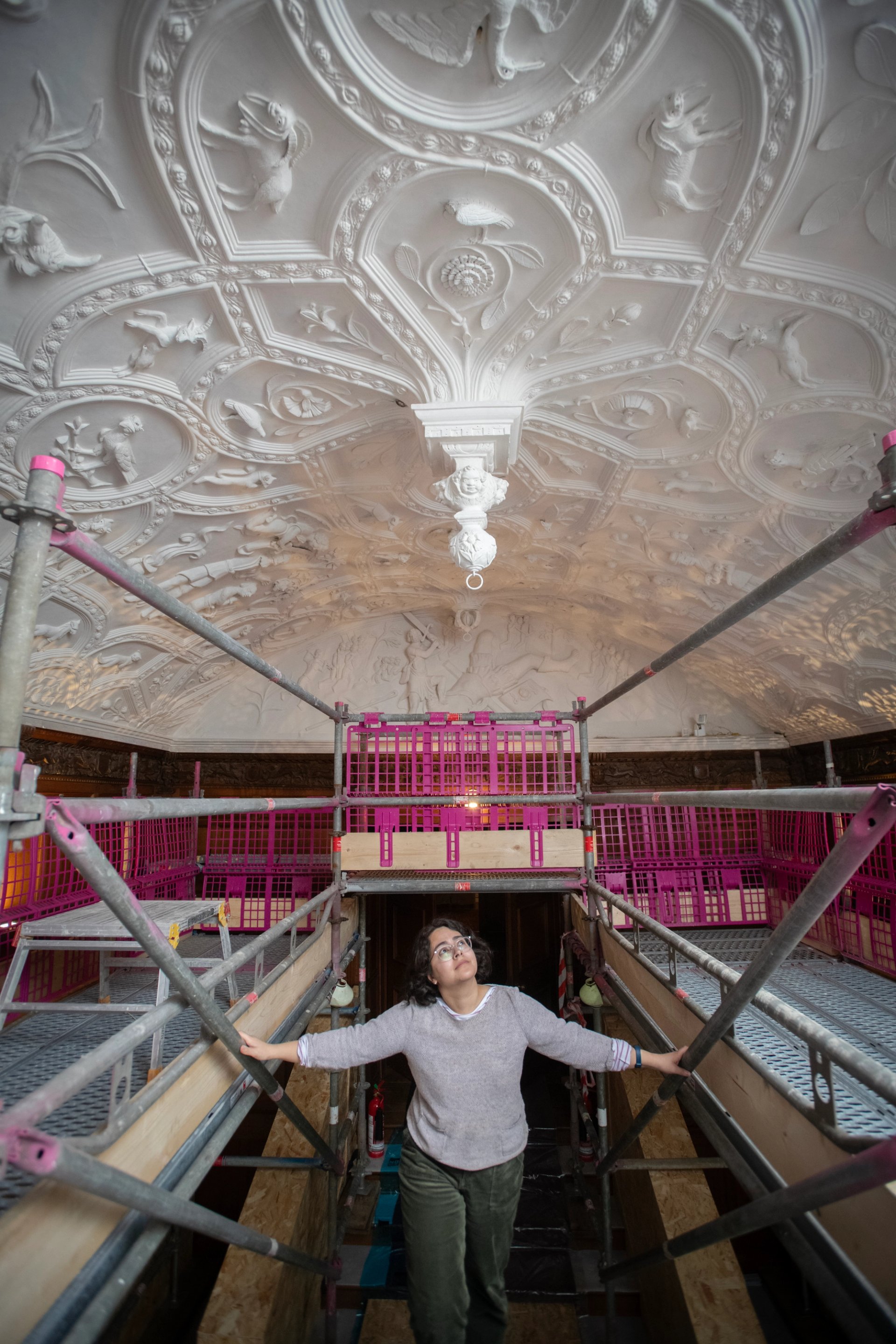
A visitor climbing the scaffolding to view the Long Gallery ceiling at National Trust Lanhydrock, Cornwall © National Trust Images. Steve Haywood
The house has been owned by the National Trust since 1953, but this is the first major work on the ceiling. Douglas Carpenter and Laura Karoniemi, from Cliveden, have been delicately cleaning, repairing cracks, and in surprisingly few places, recreating missing elements; Karoniemi spent a morning making a finger nail sized bull’s horn. Carpenter says their work shows that 99% of the plaster is the original Jacobean work, but they discovered many figures had added necklaces, belts or garters made of copper wire, evidence they believe of stabilisation work after the Victorian fire. The whole ceiling is being repainted a dazzling snow white.
The plaster work will finish early this summer—more work is needed on the timber supports above it—but the platform will remain open to visitors until the end of October, allowing what the trust hopes will be not just a once-in-a-lifetime chance but the first and last for many life times. “It could well be secure now for another century,” Carpenter says, “we hope so anyway.”


